
We tinker with the tapioca trend to make some scrumptious hotpot!
Tapioca is a big enough social phenomenon at this juncture to both have its own verb form — tapiru, to go out for tapioca drinks — and for that verb to then be nominated as one of the definitive buzzwords for 2019.
However, tapioca isn’t just enjoyed as a trendy texture boost for sweet milk teas. Restaurants have created their own takes with tapioca, like the salmon-roe style tapioca rice bowl or bubble tea ramen.
And now, our Japanese-language reporter Mai decided that it was high time we brought tapioca into the wintry seasons, and what’s more wintry than a steaming serving of tapioca nabe hotpot?
First, Mai prepared her star ingredient: the tapioca itself.
▼ The package encourages you use this wealth of tapioca in desserts, Chinese soups, anything!
But tapioca was just one part of the puzzle. Mai had to decide what flavor profile her hotpot would use as its base, and ultimately ruled out strong flavors like kimchi and miso so as to better highlight the mild tapioca.
Then it hit her! She could pair tapioca with its greatest partner in the blogosphere: black tea! Since she was making a savory dish, Mai opted for sugarless plain black tea rather than the usual sweet and milky mixtures that pair with tapioca.
With the base chosen, she could pick the rest of her ingredients.
Ingredients (for one to two servings)
- Pre-cut vegetables for hot pot (one pack, cut into blocks)
- Tofu (one block)
- Cuts of pork (your preferred amount)
- Dried or frozen tapioca pearls (your preferred amount)
- Gogo no Koucha sugar-free tea (500 milliliters, or 2 cups)
- White dashi soup stock (about a spoonful)
- Water (300 milliliters, or 1.25 cups)
▼ Here are all the ingredients except the water and dashi. Mai’s vegetables are lots of leafy greens and buna shimeji mushrooms.
Hotpot is practically defined by its freedom, so don’t feel beholden to this vague list! The tapioca you use in the mix can differ, too. Mai’s only recommendation is that you steer clear of pre-sweetened tapioca, as those will make your broth taste peculiar.
So with the ingredients prepared and belly growling, it’s high time to get to the recipe itself!
Follow these steps to enjoy a tasty tapioca and tea hotpot:
First, put the pre-cut vegetables into your pot or skillet. Then add the water, dashi and sugar-free tea, and simmer the vegetables in the liquid.
Once the liquid reaches a boil, add in your sliced tofu and tapioca.
Check the tapioca as it boils. Once it seems ready to eat, add in the pork cuts.
Let the meat cook through… and you’re ready to serve your hotpot!
Once your hotpot is plated up, you might notice something… or rather not notice it: the small, clear pearls of tapioca that Mai used blended perfectly into the broth, though they were obvious enough once she lifted up a spoonful to check.
This, she acknowledged, was probably for the best: having large, dark blobs of boba floating around in the broth might have made her lose her appetite.
▼ You can see the tiny chewy pearls in the broth, but only if you look close!
So what was Mai’s verdict?
“From eating this, and experiencing the soup and the tapioca and all the other ingredients, I have to tell you… the tea and white dashi broth was delicious enough to start a revolution. I honestly could take or leave the tapioca!”
She then apologized for not emphasizing the tapioca more in her review, but then stressed that the broth for this hotpot is really good. Like, really good. It had a healing, almost medicinal tang to its taste, and the gentle dashi flavor warmed her from the inside out. Considering tapioca is what spurred her to make this incredible broth, we’ll count that as a victory.
She did say that the texture of the tapioca was a delight to eat, and it was very fun to enjoy tapioca’s typical squishiness alongside a host of savory ingredients. Sadly, tapioca itself doesn’t have a strong flavor, so it lacked the intense impact of other last-minute hotpot improvisations.
Mai still insists that if you’re obsessed with the chewy texture of tapioca, you should definitely try this recipe out for yourself. Cook a batch up when the weather gets cold! And if you’d rather flip this recipe completely on its head, you can try out Mr. Sato’s savory take on a tapioca drink where he swaps the tapioca pearls out for salmon roe.
Images: ©SoraNews24
● Want to hear about SoraNews24’s latest articles as soon as they’re published? Follow us on Facebook and Twitter!
[ Read in Japanese ]


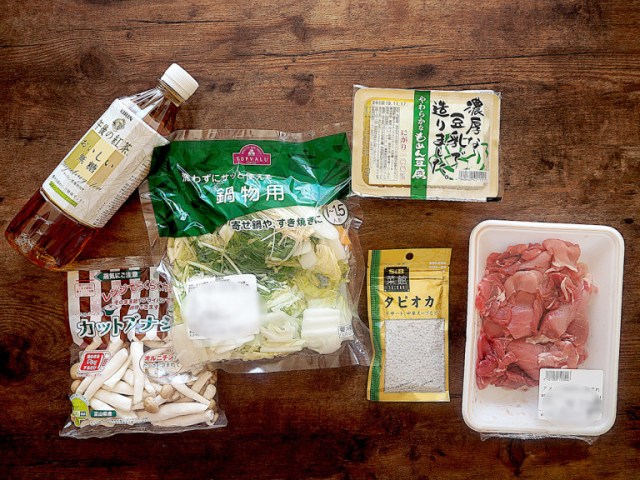
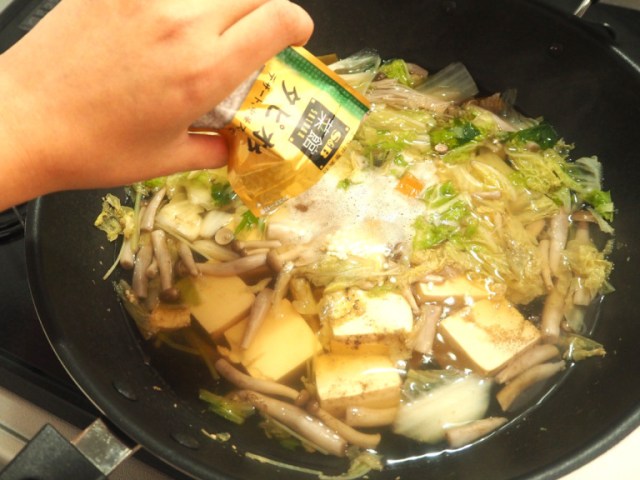

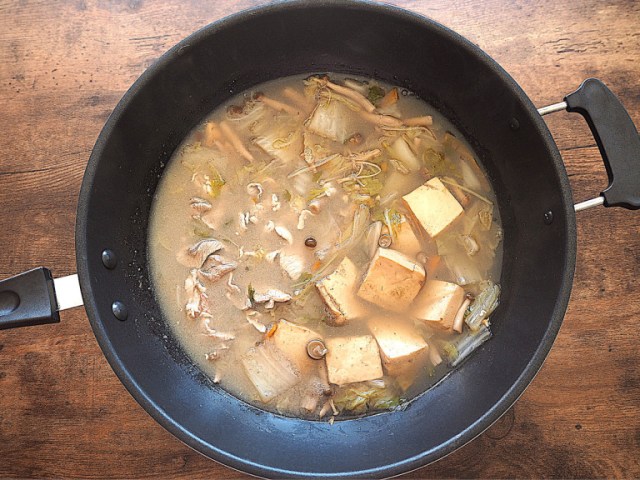
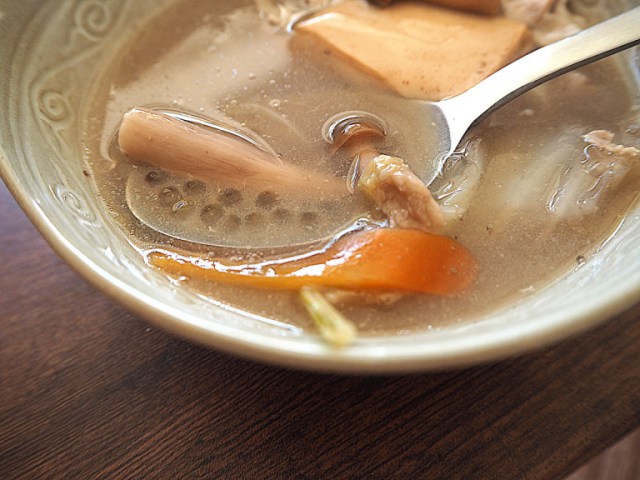
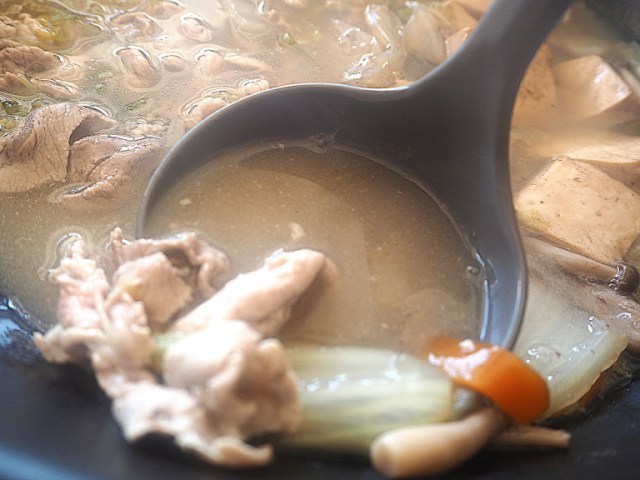
 Salamander soup?!? We try “giant salamander rice with green tea” in Kyoto
Salamander soup?!? We try “giant salamander rice with green tea” in Kyoto Godiva tapioca tea on sale in Japan just in time to get in on the country’s boba boom【Taste test】
Godiva tapioca tea on sale in Japan just in time to get in on the country’s boba boom【Taste test】 We ate a pickled tapioca bubble rice bowl and it was un-bowl-lievable
We ate a pickled tapioca bubble rice bowl and it was un-bowl-lievable Sake-brewing company produces one-chug wonder: boozy boba in a bottle【Taste test】
Sake-brewing company produces one-chug wonder: boozy boba in a bottle【Taste test】 You can make rice with tapioca bubble tea, and it’s surprisingly tasty【SoraKitchen】
You can make rice with tapioca bubble tea, and it’s surprisingly tasty【SoraKitchen】 McDonald’s new Happy Meals offer up cute and practical Sanrio lifestyle goods
McDonald’s new Happy Meals offer up cute and practical Sanrio lifestyle goods Studio Ghibli glasses cases let anime characters keep an eye on your spectacles
Studio Ghibli glasses cases let anime characters keep an eye on your spectacles All-you-can-drink Starbucks and amazing views part of Tokyo’s new 170 meter-high sky lounge
All-you-can-drink Starbucks and amazing views part of Tokyo’s new 170 meter-high sky lounge Super Nintendo World expansion gets delayed for several months at Universal Studios Japan
Super Nintendo World expansion gets delayed for several months at Universal Studios Japan Beautiful Sailor Moon manhole cover coasters being given out for free by Tokyo tourist center
Beautiful Sailor Moon manhole cover coasters being given out for free by Tokyo tourist center Kyoto’s 100 Demons yokai monster parade returns!
Kyoto’s 100 Demons yokai monster parade returns! More foreign tourists than ever before in history visited Japan last month
More foreign tourists than ever before in history visited Japan last month The oldest tunnel in Japan is believed to be haunted, and strange things happen when we go there
The oldest tunnel in Japan is believed to be haunted, and strange things happen when we go there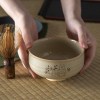 Studio Ghibli adds magic to your matcha with new tea ceremony whisk and bowl
Studio Ghibli adds magic to your matcha with new tea ceremony whisk and bowl The top 11 Japanese summer festivals, according to travellers
The top 11 Japanese summer festivals, according to travellers Disney princesses get official manga makeovers for Manga Princess Cafe opening in Tokyo
Disney princesses get official manga makeovers for Manga Princess Cafe opening in Tokyo Starbucks reopens at Shibuya Scramble Crossing with new look and design concept
Starbucks reopens at Shibuya Scramble Crossing with new look and design concept Beautiful new Final Fantasy T-shirt collection on the way from Uniqlo【Photos】
Beautiful new Final Fantasy T-shirt collection on the way from Uniqlo【Photos】 Is the new Shinkansen Train Desk ticket worth it?
Is the new Shinkansen Train Desk ticket worth it? Foreign English teachers in Japan pick their favorite Japanese-language phrases【Survey】
Foreign English teachers in Japan pick their favorite Japanese-language phrases【Survey】 Japanese convenience store packs a whole bento into an onigiri rice ball
Japanese convenience store packs a whole bento into an onigiri rice ball We try out “Chan Ramen”, an underground type of ramen popular in the ramen community
We try out “Chan Ramen”, an underground type of ramen popular in the ramen community Studio Ghibli releases Kiki’s Delivery Service chocolate cake pouches in Japan
Studio Ghibli releases Kiki’s Delivery Service chocolate cake pouches in Japan Japan’s bone-breaking and record-breaking roller coaster is permanently shutting down
Japan’s bone-breaking and record-breaking roller coaster is permanently shutting down New definition of “Japanese whiskey” goes into effect to prevent fakes from fooling overseas buyers
New definition of “Japanese whiskey” goes into effect to prevent fakes from fooling overseas buyers Our Japanese reporter visits Costco in the U.S., finds super American and very Japanese things
Our Japanese reporter visits Costco in the U.S., finds super American and very Japanese things Studio Ghibli unveils Mother’s Day gift set that captures the love in My Neighbour Totoro
Studio Ghibli unveils Mother’s Day gift set that captures the love in My Neighbour Totoro Foreign passenger shoves conductor on one of the last full runs for Japan’s Thunderbird train
Foreign passenger shoves conductor on one of the last full runs for Japan’s Thunderbird train Domino’s Japan now sells…pizza ears?
Domino’s Japan now sells…pizza ears? New Japanese KitKat flavour stars Sanrio characters, including Hello Kitty
New Japanese KitKat flavour stars Sanrio characters, including Hello Kitty Kyoto creates new for-tourist buses to address overtourism with higher prices, faster rides
Kyoto creates new for-tourist buses to address overtourism with higher prices, faster rides Sales of Japan’s most convenient train ticket/shopping payment cards suspended indefinitely
Sales of Japan’s most convenient train ticket/shopping payment cards suspended indefinitely Sold-out Studio Ghibli desktop humidifiers are back so Totoro can help you through the dry season
Sold-out Studio Ghibli desktop humidifiers are back so Totoro can help you through the dry season Japanese government to make first change to romanization spelling rules since the 1950s
Japanese government to make first change to romanization spelling rules since the 1950s Ghibli founders Toshio Suzuki and Hayao Miyazaki contribute to Japanese whisky Totoro label design
Ghibli founders Toshio Suzuki and Hayao Miyazaki contribute to Japanese whisky Totoro label design Doraemon found buried at sea as scene from 1993 anime becomes real life【Photos】
Doraemon found buried at sea as scene from 1993 anime becomes real life【Photos】 Tokyo’s most famous Starbucks is closed
Tokyo’s most famous Starbucks is closed One Piece characters’ nationalities revealed, but fans have mixed opinions
One Piece characters’ nationalities revealed, but fans have mixed opinions We asked a Uniqlo employee what four things we should buy and their suggestions didn’t disappoint
We asked a Uniqlo employee what four things we should buy and their suggestions didn’t disappoint Princesses, fruits, and blacksmiths: Study reveals the 30 most unusual family names in Japan
Princesses, fruits, and blacksmiths: Study reveals the 30 most unusual family names in Japan Is the end nigh for tapioca? Tokyo tapioca shops suffer closures in the midst of COVID-19
Is the end nigh for tapioca? Tokyo tapioca shops suffer closures in the midst of COVID-19 Old tires and shoe soles said to be being used in bubble tea tapioca pearls
Old tires and shoe soles said to be being used in bubble tea tapioca pearls Bubble tea amusement park to open in Harajuku, promises to be the “tapioca land of your dreams”
Bubble tea amusement park to open in Harajuku, promises to be the “tapioca land of your dreams” Tapioca tea is the biggest thing in Tokyo right now, so we try Tokyo’s biggest tapioca tea【Pics】
Tapioca tea is the biggest thing in Tokyo right now, so we try Tokyo’s biggest tapioca tea【Pics】 We visit Tokyo Tapioca Land in Harajuku
We visit Tokyo Tapioca Land in Harajuku Domino’s now sells tapioca boba pizza in Japan, and we’re so very, very confused【Taste test】
Domino’s now sells tapioca boba pizza in Japan, and we’re so very, very confused【Taste test】 We try Starbucks Taiwan’s scrumptious mizu manju buns for the Dragon Boat Festival【Taste test】
We try Starbucks Taiwan’s scrumptious mizu manju buns for the Dragon Boat Festival【Taste test】 Muji releases a new boba tea kit and we taste test it at home【Taste test】
Muji releases a new boba tea kit and we taste test it at home【Taste test】 Tapioca fad on the way out in Japan
Tapioca fad on the way out in Japan Lipton releases new bubble tea ice cream bar with tapioca pearls in Japan
Lipton releases new bubble tea ice cream bar with tapioca pearls in Japan How to make cheese with just three ingredients【SoraKitchen】
How to make cheese with just three ingredients【SoraKitchen】 We try new jiggly Kuzu Mochi Cider drink in Nara, and it’s a treat that’s hard to beat
We try new jiggly Kuzu Mochi Cider drink in Nara, and it’s a treat that’s hard to beat Mister Donut demonstrates the wonders of hot bubble tea with royal milk and rich matcha flavors
Mister Donut demonstrates the wonders of hot bubble tea with royal milk and rich matcha flavors We try Tapioca Beer, the drink that everyone’s raving about in Japan right now
We try Tapioca Beer, the drink that everyone’s raving about in Japan right now It’s sakura bubble tea season at TP TEA stands across Japan!
It’s sakura bubble tea season at TP TEA stands across Japan! Pizza Hut creates Putting our Soul into Every Bite Ramen Pizza with famous Japanese ramen chain
Pizza Hut creates Putting our Soul into Every Bite Ramen Pizza with famous Japanese ramen chain
Leave a Reply